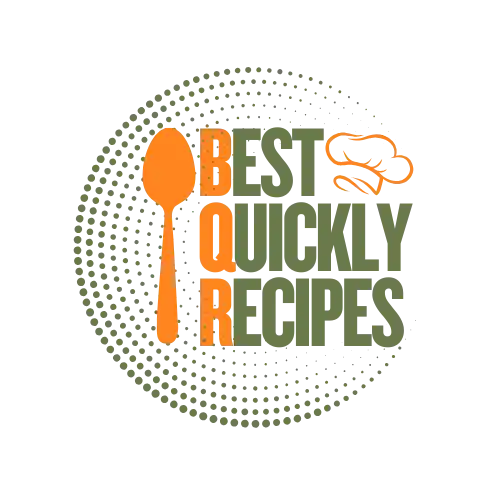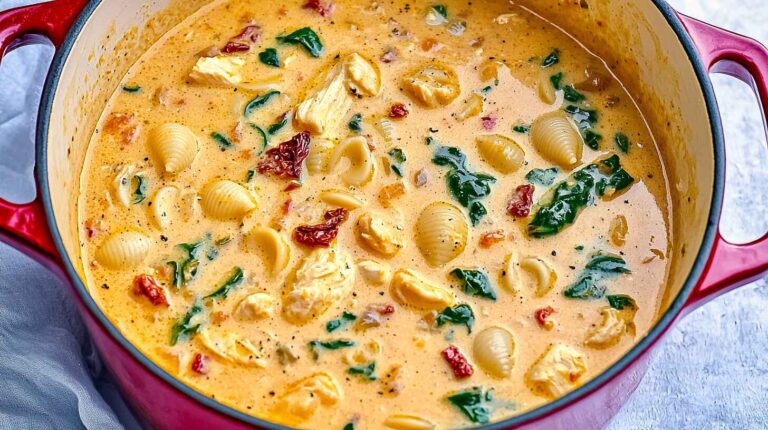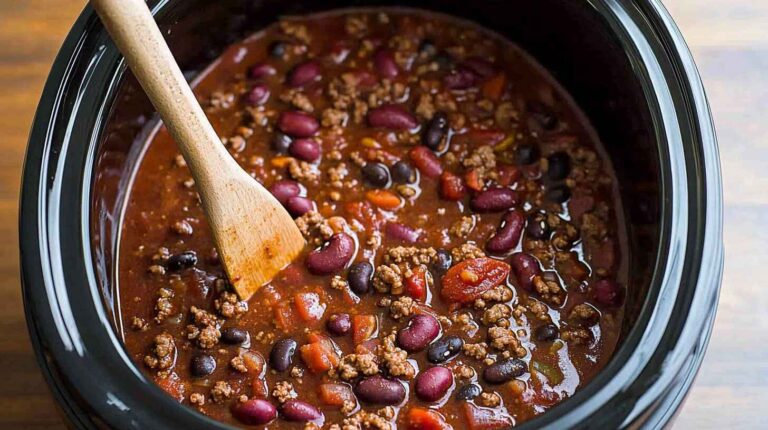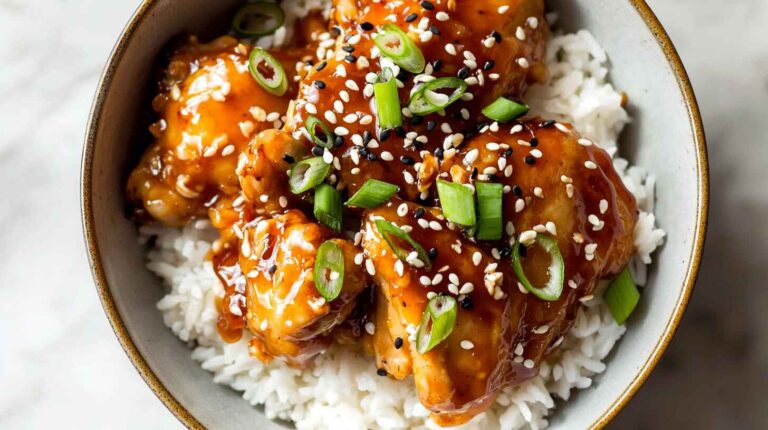The Best Fluffy Pancakes recipe you will fall in love with. Full of tips and tricks to help you make the best pancakes.
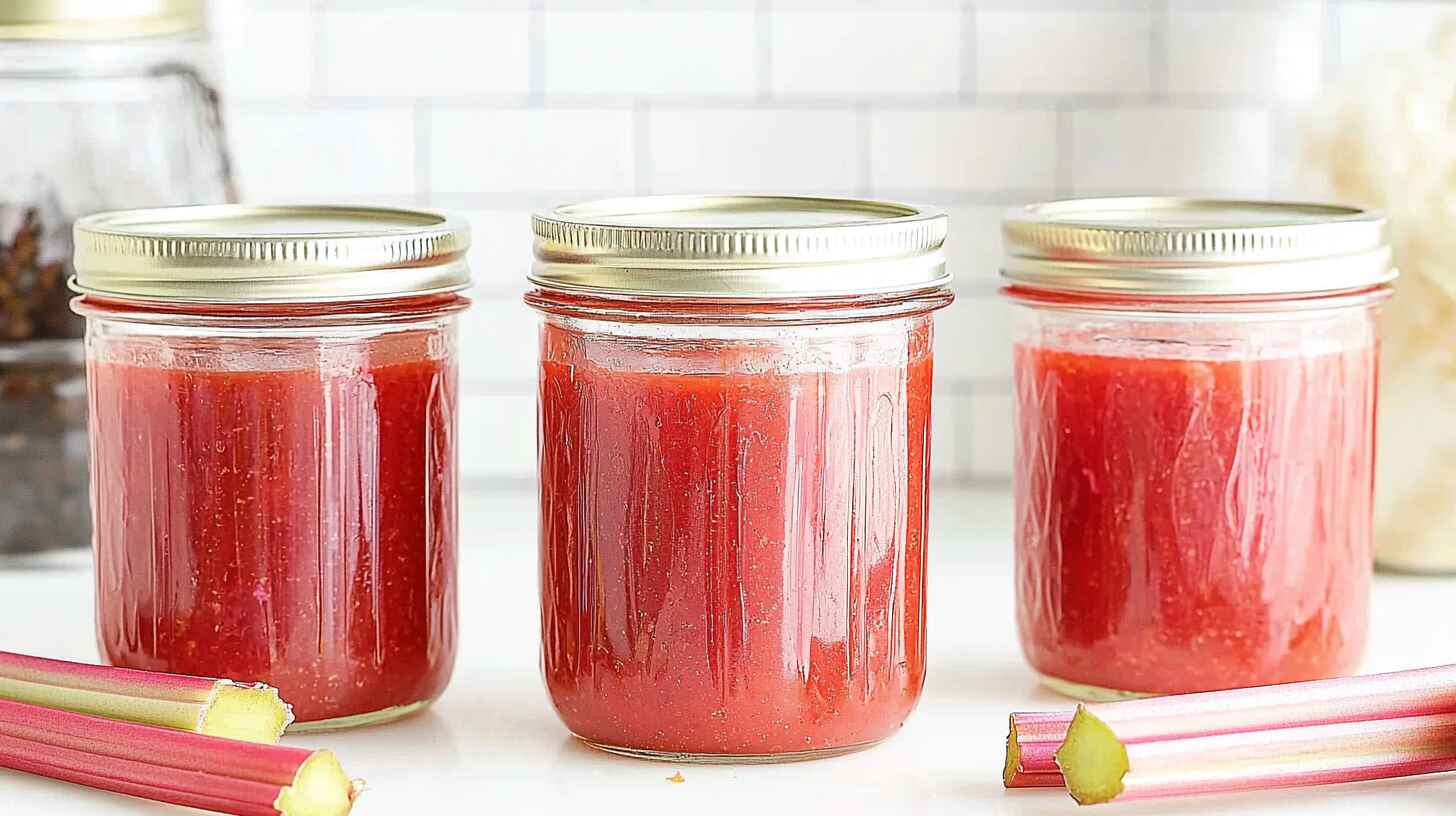
There’s something beautifully nostalgic about the scent of rhubarb simmering on the stove. I’m Sofia Child, and one of my earliest memories of rhubarb sauce comes from a spring morning in Austin when my mom tossed together chopped stalks, a bit of sugar, and water in her favorite saucepan. Within minutes, the whole kitchen smelled like a pie in progress—bright, sharp, and full of comfort. That’s the magic of rhubarb sauce: it’s simple, but it feels like home.
Back then, we’d drizzle it over pancakes, swirl it into yogurt, or just spoon it warm into bowls like applesauce. Now that I live in Colorado, I’ve made this sauce part of my own rhythm. I make a batch as soon as rhubarb shows up in the markets, usually followed by a tray of Rhubarb Shortbread Bars for good measure. The sauce keeps well in the fridge and makes everything—breakfast, dessert, even savory dinners—taste a little more exciting.
What Is Rhubarb Sauce Exactly?
A Quick & Easy Springtime Essential
Rhubarb sauce is a cooked mixture of rhubarb, sugar, and sometimes flavor add-ins like vanilla, lemon, or orange. It has the texture of applesauce but with a sharper, more complex flavor. You simmer it gently on the stove until the rhubarb breaks down and creates a luscious, spoonable sauce.
It only takes 15–20 minutes to prepare, and it stores beautifully. You can serve it warm or cold, sweeten it to your taste, and use it in endless ways. On toast? Absolutely. Over ice cream? Heaven. Even stirred into a vinaigrette for a strawberry-rhubarb salad? Yes, yes, yes.
Is Rhubarb Safe to Eat Like This?
Definitely! While rhubarb leaves are toxic (don’t eat those), the stalks are completely safe once cooked—and they’re packed with flavor. When simmered with sugar, rhubarb transforms from sharp and stringy to smooth and slightly jammy. You can also reduce or increase sugar depending on how tangy you like it. Some folks go bold with honey or maple syrup for a different twist.
The beauty of rhubarb sauce lies in its flexibility. Want it thicker? Cook it longer. Want a pourable version? Add a splash more water or orange juice. It’s the kind of recipe you can make your own with minimal effort but maximum payoff.
How to Make Rhubarb Sauce (Step-by-Step)
Simple Ingredients, Big Flavor
One of the best things about rhubarb sauce is that it only takes a handful of ingredients. The base recipe is incredibly straightforward—just rhubarb, sugar, and water. That’s it! But the fun comes when you start adding subtle twists. Think a splash of orange juice, a touch of vanilla, or a pinch of cinnamon to give your sauce a unique spin.
Here’s the base recipe I’ve used for years. It yields a sauce that’s perfectly tangy and sweet, with just the right consistency to spoon, drizzle, or swirl.
Basic Rhubarb Sauce Recipe
| Ingredient | Amount |
|---|---|
| Fresh rhubarb (chopped) | 4 cups |
| Granulated sugar | 1/2 cup (adjust to taste) |
| Water | 1/4 cup |
Instructions
- Combine chopped rhubarb, sugar, and water in a medium saucepan over medium heat.
- Bring to a simmer, stirring occasionally, until the rhubarb starts to break down (about 10 minutes).
- Lower the heat and cook for another 5–10 minutes, stirring more often, until the sauce reaches your desired thickness.
- Taste and adjust sweetness if needed. Add a splash of vanilla, orange juice, or lemon zest if you like.
- Let it cool before storing. The sauce will thicken slightly as it cools.
That’s it. Simple, foolproof, and so satisfying. You can double or triple the recipe for freezing or gifting. I always keep a jar in my fridge from late April through June—it’s become a seasonal staple in my kitchen.
Flavor Variations You’ll Want to Try
While the classic version is always a winner, rhubarb sauce plays really well with other flavors. Here are a few ideas I’ve tested (and loved):
- Rhubarb-Strawberry Sauce: Add 1 cup sliced strawberries at the start. Reduce sugar slightly.
- Spiced Rhubarb Sauce: Add 1/2 teaspoon cinnamon and a pinch of nutmeg.
- Honey Rhubarb Sauce: Replace half the sugar with honey for a deeper, floral sweetness.
- Vanilla Rhubarb: Stir in 1 teaspoon vanilla extract at the end of cooking.
Want to pair your sauce with something irresistible? Try it drizzled over rhubarb shortbread bars. It adds an extra burst of flavor and makes each bite even more memorable.
And here’s a fun tip: blend the sauce once cooled for an ultra-smooth texture, or leave it chunky if you prefer rustic charm. It’s completely up to you. That’s the joy of homemade sauces—you get to make them exactly how you like.
Creative Ways to Use Rhubarb Sauce
Turn Simple Dishes Into Something Special
Rhubarb sauce is more than just a topping—it’s a versatile ingredient that can bring brightness to all kinds of meals. Once you make a batch, you’ll find yourself reaching for it all the time. It’s the kind of thing that sneaks into your weekly routine without even trying. And when it’s as simple as this to make? You’ll never buy a store-bought version again.
One of my favorite ways to use it is as a spread. A spoonful on buttered toast or scones adds just the right amount of zing. It’s also amazing stirred into oatmeal or layered in a yogurt parfait. Try a swirl of it over vanilla ice cream—you’ll thank me later. You can even fold it into whipped cream to make a gorgeous pink rhubarb mousse for spring desserts.
And don’t forget savory pairings. I sometimes serve it with roast pork or grilled chicken as a tart, fruity condiment. It acts almost like a chutney—sharp enough to cut through fat, but sweet enough to keep it balanced.
If you’re baking, you can use this sauce to moisten cake layers or fill thumbprint cookies. And of course, it’s a perfect companion to my rhubarb shortbread bars. Drizzle a little on top or serve it on the side as a dipping sauce—yep, dessert dips are a thing now!
How to Store and Freeze Rhubarb Sauce
Once your sauce has cooled to room temperature, transfer it into a clean jar or container with a tight lid. It keeps well in the fridge for about 7 to 10 days. I like to use glass jars because they don’t absorb color or flavor—and rhubarb sauce is known for its vibrant hue.
To freeze it, just spoon the sauce into freezer-safe containers, leaving a little space at the top for expansion. Label and date them, then pop them into the freezer. They’ll keep for up to 6 months with no loss of flavor. When you’re ready to use it, thaw in the fridge overnight or gently warm it on the stove if you prefer it hot.
Sometimes I freeze rhubarb sauce in silicone ice cube trays and store the cubes in a zip-top bag. That way, I can toss a cube into warm oatmeal or a blender smoothie without measuring. It’s fast, easy, and gives your breakfast a pop of color and flavor with zero hassle.
Make It a Habit
Once you’ve made rhubarb sauce a few times, it becomes second nature. I always try to make a double batch when rhubarb is in season, which lets me enjoy it long after the last stalk is gone from the farmer’s market. It’s one of those recipes that doesn’t just sit on a shelf—you use it, again and again, because it makes everything better.
It’s easy to forget how powerful simple things can be. A pot of rhubarb sauce bubbling away on the stove isn’t fancy, but it feels like a moment of calm in a busy day. It’s comforting and just tart enough to wake up your taste buds. That’s the kind of kitchen magic I live for.
So next time you find fresh rhubarb at your market, grab a bunch and give this a try. Your morning toast, your favorite ice cream, even your go-to roast chicken dinner will thank you. And if you’re looking for another way to celebrate rhubarb season, don’t miss my rhubarb shortbread bars—they’re buttery, bright, and baked to perfection.
Final Thoughts: Rhubarb Sauce That Does It All
Rhubarb sauce is one of those recipes that feels like a kitchen secret—but it shouldn’t be. It’s quick to make, packed with flavor, and flexible enough to show up on your breakfast table or dessert plate. Whether you’re using it to top yogurt, pair with pork, or sweeten your shortbread bars, it brings a fresh, homemade brightness that store-bought just can’t match.
I hope you’ll keep a jar of it in your fridge this spring. It’s one of those small things that makes everyday meals feel just a little more special. And if you haven’t yet, pair it with my rhubarb shortbread bars for the ultimate sweet-tart duo. You’ll never look at rhubarb the same way again.
Print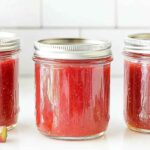
Rhubarb Sauce: A Sweet-Tart Staple That Transforms Every Bite
- Total Time: 20 mins
- Yield: 2 cups 1x
- Diet: Vegetarian
Description
This quick rhubarb sauce is sweet, tangy, and completely versatile. Use it over ice cream, toast, or even meat. Ready in under 20 minutes!
Ingredients
4 cups chopped rhubarb
1/2 cup granulated sugar (adjust to taste)
1/4 cup water
Instructions
1. Combine rhubarb, sugar, and water in a saucepan over medium heat.
2. Bring to a simmer and cook for 10 minutes, stirring occasionally.
3. Lower heat and cook another 5–10 minutes until sauce thickens.
4. Add vanilla, citrus zest, or spices if desired. Stir well.
5. Let cool before storing in jars or serving.
Notes
Store in fridge for up to 10 days. Freeze up to 6 months. Try it in yogurt, on toast, or with grilled meats.
- Prep Time: 5 mins
- Cook Time: 15 mins
- Category: Sauce
- Method: Simmering
- Cuisine: American
Nutrition
- Serving Size: 2 tbsp
- Calories: 25
- Sugar: 5g
- Sodium: 0mg
- Fat: 0g
- Saturated Fat: 0g
- Unsaturated Fat: 0g
- Trans Fat: 0g
- Carbohydrates: 6g
- Fiber: 1g
- Protein: 0g
- Cholesterol: 0mg
Frequently Asked Questions About Rhubarb Sauce
Do I peel rhubarb before I cook it?
Nope! There’s no need to peel rhubarb. Just trim the ends and wash the stalks well. If you find very stringy outer layers on older stalks, you can peel them off—but it’s optional and rarely necessary.
How long does rhubarb sauce last in the fridge?
Rhubarb sauce lasts up to 7–10 days in an airtight container in the fridge. Always let it cool before sealing, and use clean utensils when serving to extend its freshness.
What is the healthiest way to eat rhubarb?
The healthiest way to enjoy rhubarb is with minimal added sugar. You can sweeten it naturally with honey or use less sugar than typical recipes call for. Serve it with whole grains, Greek yogurt, or fruit for a balanced meal.
Why do my teeth feel funny after eating rhubarb?
That “fuzzy” feeling comes from oxalic acid, which is naturally found in rhubarb. It can slightly react with your tooth enamel, but it’s harmless in moderate amounts. Cooking the rhubarb and pairing it with dairy can reduce the effect.
